Martius Yellow
Synonym(s):2,4-Dinitro-1-naphthol
- CAS NO.:605-69-6
- Empirical Formula: C10H6N2O5
- Molecular Weight: 234.16
- MDL number: MFCD00065352
- EINECS: 210-093-1
- SAFETY DATA SHEET (SDS)
- Update Date: 2024-12-18 14:15:30
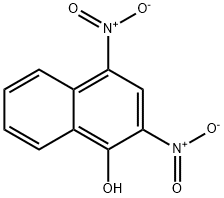
What is Martius Yellow?
Chemical properties
solid
What are the applications of Application
Martius yellow is an erythrocyte dye
Definition
ChEBI: A naphthol in which the hydroxy substituent is at C-1 with nitro groups at C-2 and -4.
Safety Profile
Poison by subcutaneous, intramuscular, intravenous, and intraperitoneal routes. Human reproductive effects by skin contact: skin toxicity. Mutation data reported. For fire, disaster, and explosion hazards, see NITRATES.
Purification Methods
Crystallise the naphthol from *benzene or aqueous EtOH. [Beilstein 6 IV 4240.]
Properties of Martius Yellow
| Melting point: | 130-133 °C(lit.) |
| Boiling point: | 376.48°C (rough estimate) |
| Density | 1.4886 (rough estimate) |
| refractive index | 1.7040 (estimate) |
| solubility | Solubility Very slightly soluble in water, ethanol |
| Colour Index | 10315 |
| form | powder |
| pka | 2.12(at 25℃) |
| color | Yellow orange |
| PH Range | Colorless (2.0) to yellow (3.2) |
| λmax | 430nm, 420nm, 432nm |
| BRN | 2057462 |
| Stability: | Stable. Incompatible with strong oxidizing agents. |
| Major Application | Photoresists, magnetic recording materials, explosives, polymerization inhibitor, surface coatings, coloring hair, for animal identification |
| EPA Substance Registry System | 1-Naphthalenol, 2,4-dinitro- (605-69-6) |
Safety information for Martius Yellow
| Signal word | Warning |
| Pictogram(s) |
 Exclamation Mark Irritant GHS07 |
| GHS Hazard Statements |
H315:Skin corrosion/irritation H317:Sensitisation, Skin H319:Serious eye damage/eye irritation H335:Specific target organ toxicity, single exposure;Respiratory tract irritation |
| Precautionary Statement Codes |
P261:Avoid breathing dust/fume/gas/mist/vapours/spray. P264:Wash hands thoroughly after handling. P264:Wash skin thouroughly after handling. P272:Contaminated work clothing should not be allowed out of the workplace. P280:Wear protective gloves/protective clothing/eye protection/face protection. P305+P351+P338:IF IN EYES: Rinse cautiously with water for several minutes. Remove contact lenses, if present and easy to do. Continuerinsing. P501:Dispose of contents/container to..… |
Computed Descriptors for Martius Yellow
New Products
Tert-butyl bis(2-chloroethyl)carbamate (S)-3-Aminobutanenitrile hydrochloride N-Boc-D-alaninol N-BOC-D/L-ALANINOL N-octanoyl benzotriazole 4-Hydrazinobenzoic acid 3,4-Dibenzyloxybenzaldehyde 1,1’-CARBONYLDIIMIDAZOLE R-2-BENZYLOXY PROPIONIC ACID 1,1’-CARBONYLDI (1,2-4 TRIAZOLE) 4-HYDROXY BENZYL ALCOHOL 3-NITRO-2-METHYL ANILINE (2-Hydroxyphenyl)acetonitrile 4-Bromopyrazole 5-BROMO-2CYANO PYRIDINE 5,6-Dimethoxyindanone 5-broMo-2-chloro-N-cyclopentylpyriMidin-4-aMine 4-methoxy-3,5-dinitropyridine 2-(Cyanocyclohexyl)acetic acid 2-aminopropyl benzoate hydrochloride 1-(4-(aminomethyl)benzyl)urea hydrochloride tert-butyl 4- (ureidomethyl)benzylcarbamate diethyl 2-(2-((tertbutoxycarbonyl)amino) ethyl)malonate Ethyl-2-chloro((4-methoxyphenyl)hydrazono)acetateRelated products of tetrahydrofuran



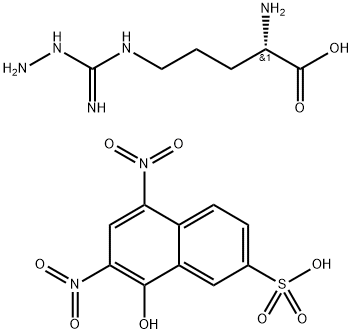
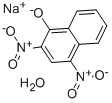
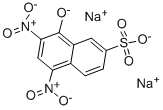
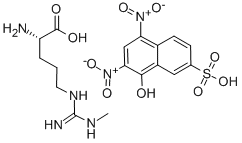
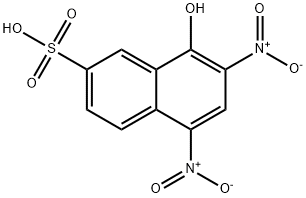
You may like
-
 Martius yellow CAS 605-69-6View Details
Martius yellow CAS 605-69-6View Details
605-69-6 -
 Martius yellow For Microscopy CAS 605-69-6View Details
Martius yellow For Microscopy CAS 605-69-6View Details
605-69-6 -
 Martius Yellow Dye content: ≥85% CAS 605-69-6View Details
Martius Yellow Dye content: ≥85% CAS 605-69-6View Details
605-69-6 -
 MARTIUS YELLOW For Microscopy CAS 605-69-6View Details
MARTIUS YELLOW For Microscopy CAS 605-69-6View Details
605-69-6 -
 N-Vinylformamide 99%View Details
N-Vinylformamide 99%View Details
13162-05-5 -
 Chloro Uracil 1820-81-1 99%View Details
Chloro Uracil 1820-81-1 99%View Details
1820-81-1 -
 2-ethyl-6-methyl-3-hydroxypyridine succinate 99%View Details
2-ethyl-6-methyl-3-hydroxypyridine succinate 99%View Details
127464-43-1 -
 2-ETHYLPYRIDINE 100-71-0 99%View Details
2-ETHYLPYRIDINE 100-71-0 99%View Details
100-71-0
Statement: All products displayed on this website are only used for non medical purposes such as industrial applications or scientific research, and cannot be used for clinical diagnosis or treatment of humans or animals. They are not medicinal or edible.